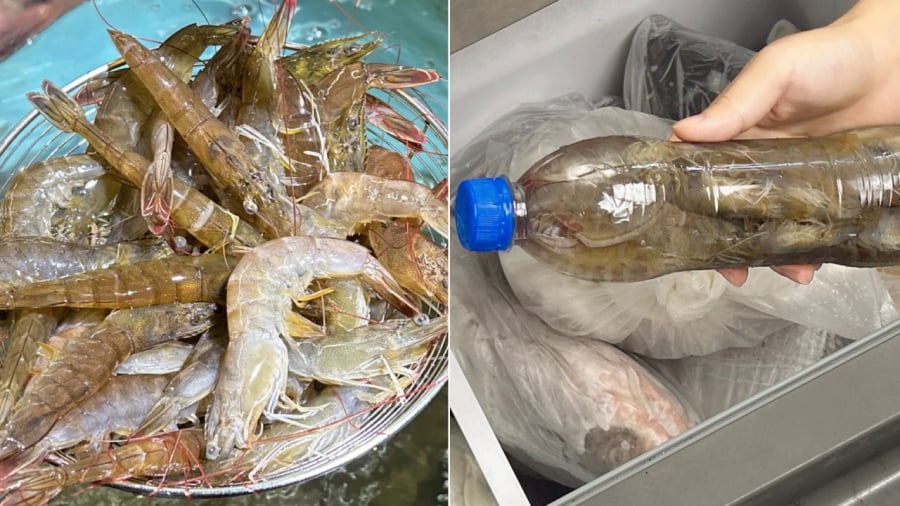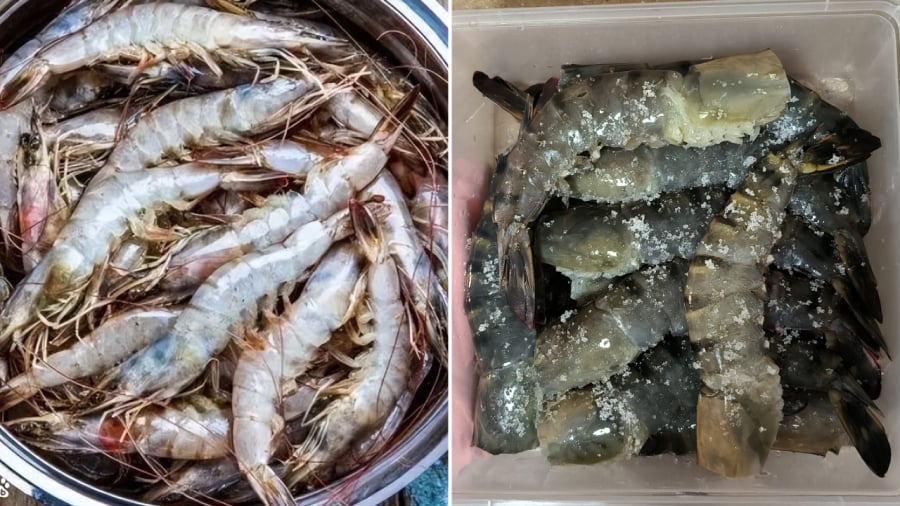Shrimp is an incredibly nutritious and delicious seafood that can be prepared in a myriad of ways. It is a great source of protein and calcium, and is very low in fat, making it a healthy option for people of all ages.
There are numerous ways to cook shrimp, including steaming, stir-frying, braising, and deep-frying.
To facilitate preparation, many people buy shrimp in bulk and store it in their refrigerators. When needed, simply take out the desired amount and defrost before cooking.
However, improper storage can lead to mushy shrimp that loses its sweetness.
To preserve shrimp at its freshest for an extended period, consider the following three tips:
Use Plastic Bottles for Shrimp Storage
Those used mineral water bottles can be put to good use for shrimp storage. Opt for 500ml bottles, which are ideal for storing enough shrimp for a single meal. Avoid larger bottles as they take up too much space and make defrosting more difficult later on.
After purchasing the shrimp, clean them thoroughly and trim their long whiskers if necessary. Then, place the shrimp inside a clean plastic bottle.
Fill the bottle with water, ensuring the shrimp are completely submerged. Take care not to overfill the bottle, as water expands when frozen and could cause the bottle to crack. Tighten the cap securely and place it in the freezer compartment of your refrigerator.
When you’re ready to use the shrimp, take out a bottle and let it thaw in cool water for about two hours.

Sugar as a Shrimp Preservative
After buying your shrimp, give them a good wash and remove the vein and back cord. Let the shrimp air dry.
Place the shrimp in a plastic or glass container with a lid. Sprinkle a thin layer of sugar over the shrimp, ensuring you don’t use too much, as this will make the shrimp overly sweet.
Sugar acts as a natural preservative, creating a barrier between the shrimp and helping to retain moisture. Secure the lid on the container and store it in the freezer.

Ziplock Bags for Space-Efficient Storage
Ziplock bags are a great way to save space in your refrigerator and keep your food organized. After purchasing your shrimp, clean them, and remove the whiskers and claws. You can also devein the shrimp and remove the back cord. Ensure the shrimp are completely dry before storage.
Arrange the shrimp on a tray and place it in the freezer. Once frozen, transfer the shrimp to a ziplock bag, seal it tightly, and expel any excess air from the bag before returning it to the freezer.
When you’re ready to cook, take out the desired amount of shrimp and let them thaw in cold water.
To ensure long-lasting freshness, it’s important to select high-quality shrimp. Look for shrimp that are still actively swimming and moving when purchased. The flesh should be firm and elastic, and the head and body should be firmly attached. Avoid shrimp with black legs or any abnormal swelling.
For convenient preparation, divide the shrimp into portions sufficient for a single meal. This way, you can defrost only what you need, maintaining the quality of the remaining shrimp.






























